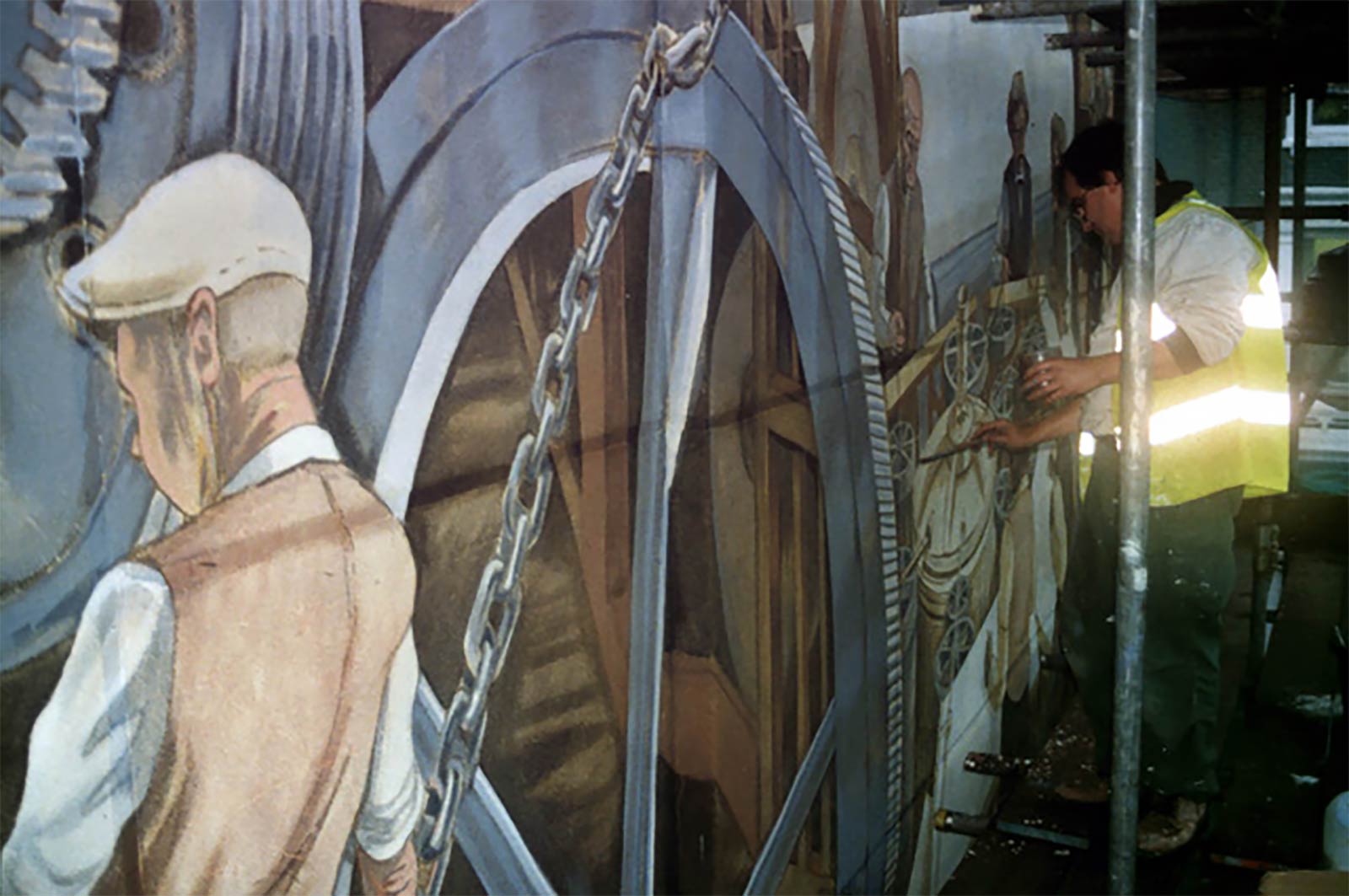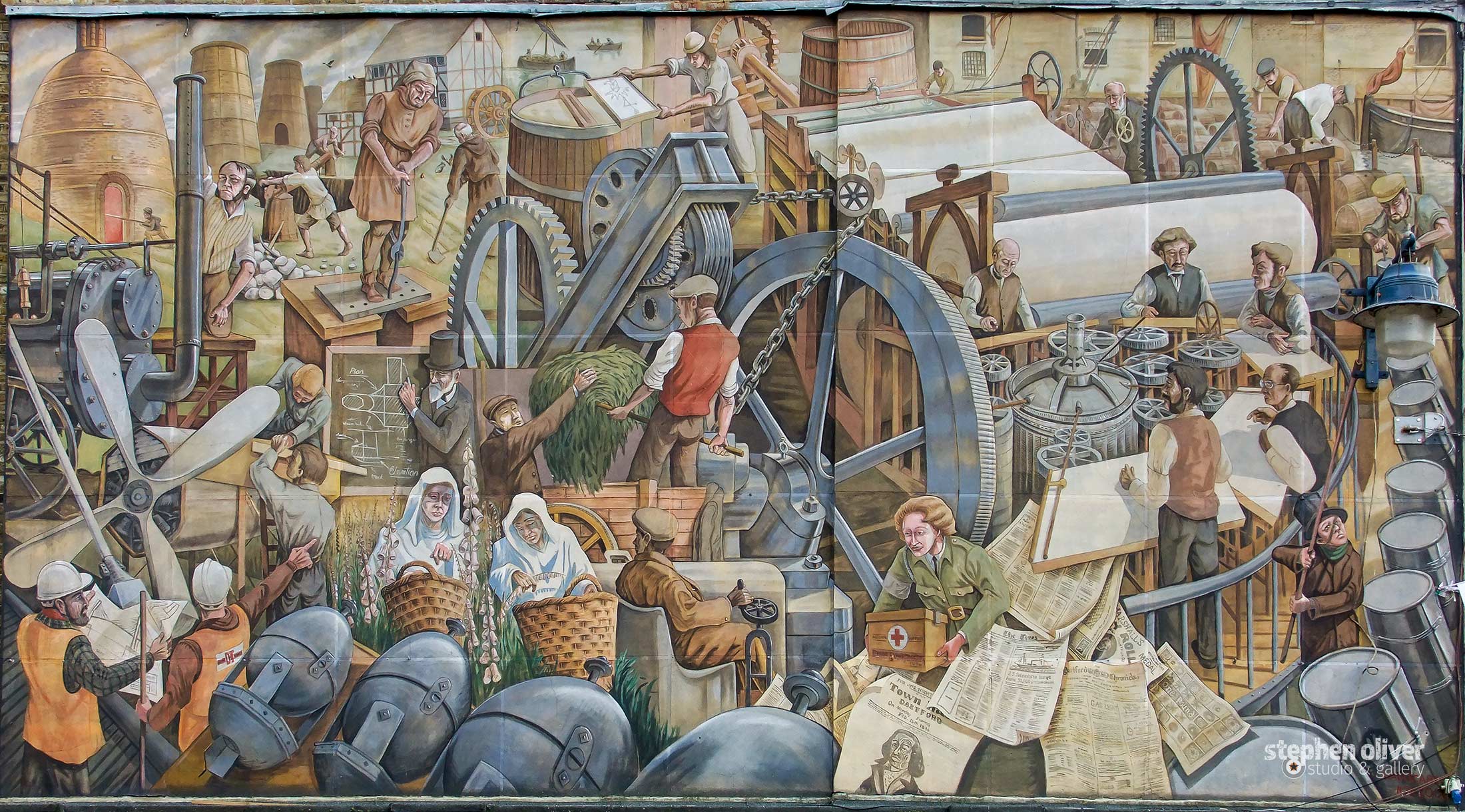Dartford’s Industrial Heritage
As part of the Millennium celebrations in 2000 Gary Drostle and the Wallscapes public art team (Gary and Rob Turner) were commissioned by Dartford Borough Council to paint the “One Town That Changed The World” mural at One Bell Corner in Dartford High Street (Kent). The mural illustrates Dartford’s industrial heritage, including many developments that helped change the world. Some of which you may not associate with Dartford.
Initial Sketch
The painting was initially sketched out in chalked, using the traditional grid/squaring up method, and then painted in chiaroscuro before the acrylic colour washes were applied. It took approximately 5 weeks to complete
Plaque
Until recently, there was a plaque below the painting which showed an index of the mural’s main sections – this is no longer visible. Below, I have created a portable digital guide to help visitors identify each section.
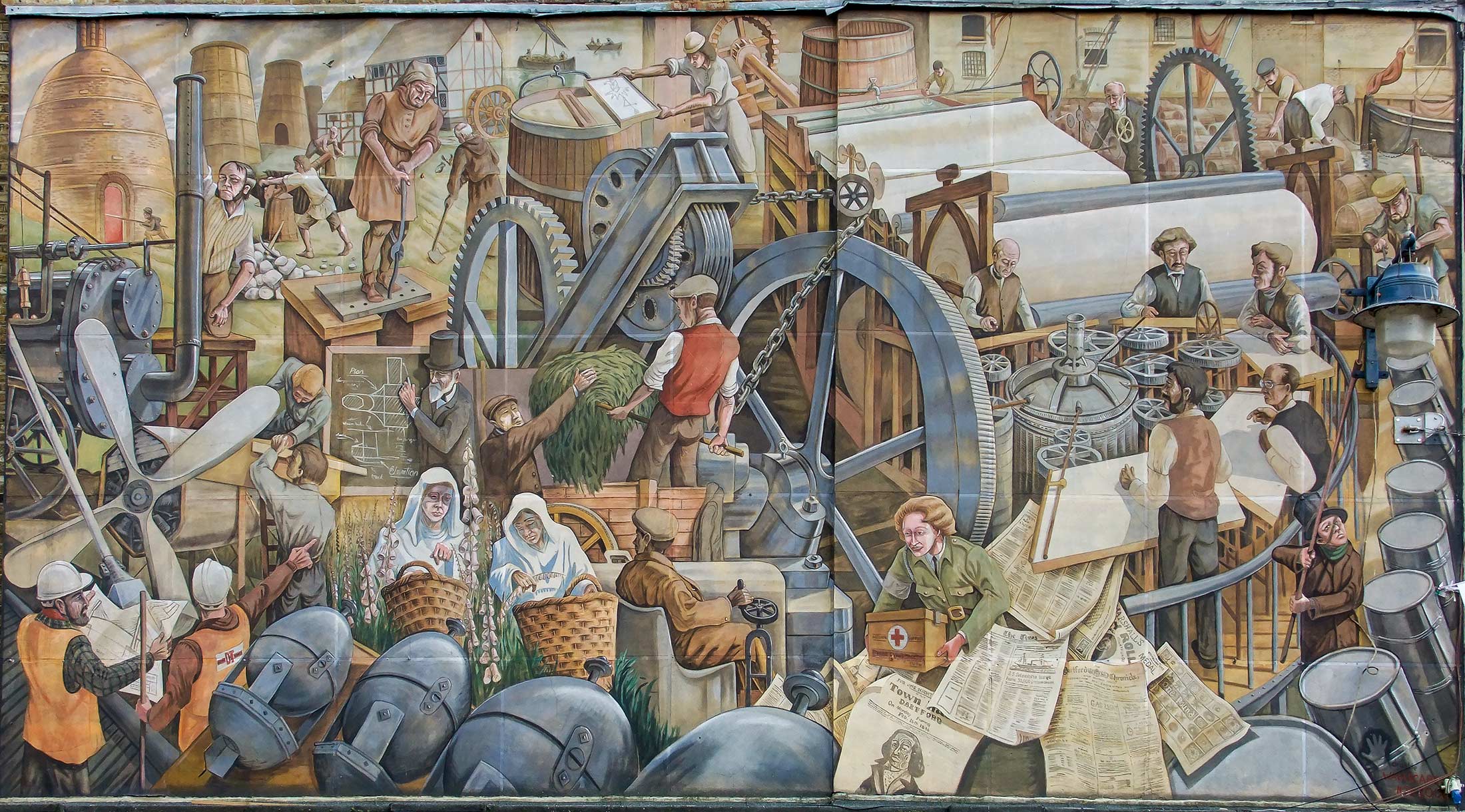
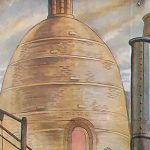
Beehive and Bottle Kilns, first developed by Joseph Aspdin in the 19th century and subsequently by Isaac Johnson at Swanscombe in 1847. The local cement industry grew into Blue Circle PLC.
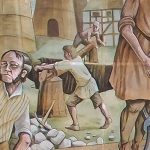
Deneholes are shafts dug during the medieval period in order to extract chalk. This was then spread on farmland. The miners would climb down the shaft using footholds in the shaft walls and a windlass to raise the chalk.
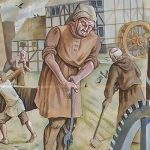
Godfrey Box set up his Iron Slitting Mill in 1595 to cut bars of iron into long square rods, which could then be drawn out to make wire. Box was from Liege, where iron slitting had been established in the 1580s.
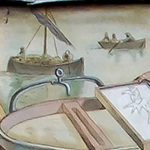
Dartford’s location on the Thames, with the freshwater from Dartford Creek, made it an ideal location for many early industries.
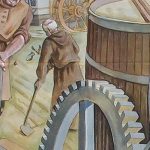
Dartford was an important station on the pilgrimage to Canterbury. Dartford Priory played a significant part in the local economy, owning large amounts of land and producing goods, wine and beer.
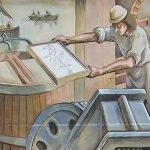
Sir John Spilman, a German migrant from Lindau, set up the first commercially successful paper mill in England for producing white paper in 1588. In 1589, he was granted the monopoly on building paper mills, producing paper and buying rag and paper for recycling. He used an image of a jester’s hat as his watermark and company logo, giving rise to the term ‘Foolscap’ for this type of paper.
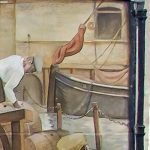
The Thames Barges were an iconic view on the Thames, transporting goods from Kent and Essex into London. See David Leal’s Facebook page to see ‘Decima’, an example of a ‘living’ barge.
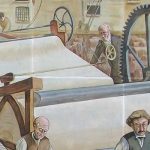
The Fourdrinier Machine was a continuous papermaking machine perfected in 1806 by Bryan Donkin. It radically advanced paper production, allowing large, easily transportable rolls to be manufactured.
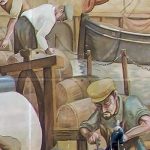
Cod Liver Oil barrels at Burrough’s Wellcome’s Kepler Wharf, a brand of health products produced in Dartford.
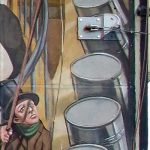
Bryan Donkin was apprenticed to John Hall of Dartford in 1792. He went on to play a leading role in the world’s first food canning factory in 1811. This major advance revolutionized long term preservation of foodstuffs.
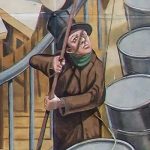
Dartford was one of the first towns to use gas lighting in its streets and homes. The Dartford Gas Company was founded in 1826.
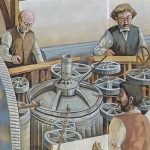
This machine revolutionized the speed at which newspapers could be printed when it appeared in the 1840s. Applegath ran silk and calico printing works.
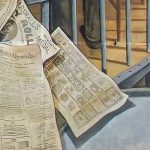
Applegath also developed a six colour printing system for the Bank of England to produce paper money from 1818 to 1821, however the system was eventually rejected.
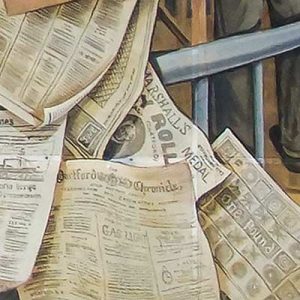
An advert for a device for producing a watermark on continuous run paper in around 1826.

The Dartford and Swanley Chronicle now known as the Dartford Times is the town’s longest running newspaper, being printed from 1869. Both publications are no longer available.
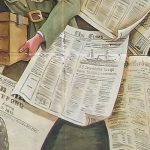
The Times ran an article in 1886 regarding the transport of 30,000 frozen mutton carcasses from the Falkland Islands to Britain. The ship was fitted with pioneering cold air machines manufactured by J&E Hall Ltd. The entire cargo arrived in perfect condition, the beginnings of the international import and export of chilled and frozen foods around the world.
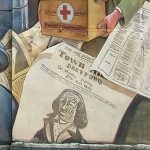
A 19th century poster advertising the presence in town of a sailor who claimed to have become a Maori Chieftain on a trip to New Zealand. The poster depicts him with traditional Maori tattoos.
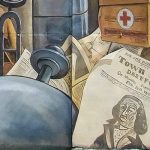
Manufactured by Burroughs Wellcome, Hazeline Snow was produced in Dartford from 1892 until 1970 to ‘whiten’ dark skin. It is still made in South East Asia.
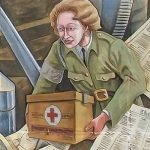
During the Second World War, J&E Hall perfected the equipment for the freeze drying of blood. It was one of the earliest uses of the freeze dry technique and enabled blood to be easily transported and distributed at the front.
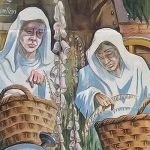
Women picking belladonna (Deadly Nightshade) and digitalis (Foxglove) at Burroughs Wellcome’s Materia Medica Farm on Dartford Freshwater Marshes around 1904. A variety of plants were grown from which compounds could be extracted.
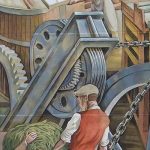
Founded in 1785 by John Hall, J&E Hall Ltd carried out a huge amount of engineering works at its Dartford works.
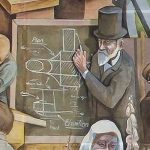
Hiram Maxim pictured talking through his plans for a heavier than air flying machine at his experimental plant in what was Bexley Hospital. On 31st July 1894 his steam powered flying machine successfully flew 100 feet.
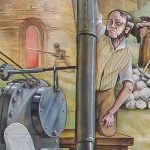
Richard Trevithick designed the world’s first railway locomotive, The Catch Me If You Can, in 1808. He worked in Dartford from 1832 after being invited by J&E Hall. Unfortunately he died a year later whilst staying at the Royal Victoria and Bull Hotel and is buried at St Edmund’s Pleasance.
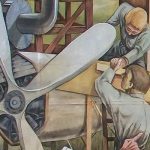
Vickers Ltd tested aircraft on Dartford Salt Marshes between 1911 and 1919. The Vimy was used by Alcock and Brown for their first non-stop transatlantic flight.
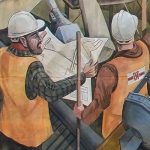
Opened in 1991 The Queen Elizabeth Bridge spans 2872 metres.
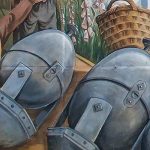
Although never used, these bombs were designed in WW2 and intended to roll like Mexican Jumping Beans into what were mistakenly believed to be V1 launch tunnels.
Thank you to Gary Drostle for providing the information below.
1. Portland Cement Works
Beehive and Bottle Kilns, first developed by Joseph Aspdin in the 19th century and subsequently by Isaac Johnson at Swanscombe in 1847. The local cement industry grew into Blue Circle PLC.
![]() Back to mural
Back to mural
2. Denehole Chalk Mine
Deneholes are shafts dug during the medieval period in order to extract chalk. This was then spread on farmland. The miners would climb down the shaft using footholds in the shaft walls and a windlass to raise the chalk.
![]() Back to mural
Back to mural
3. Godfrey Box’s Wire Slitting Mill
Godfrey Box set up his Iron Slitting Mill in 1595 to cut bars of iron into long square rods, which could then be drawn out to make wire. Box was from Liege, where iron slitting had been established in the 1580s.
![]() Back to mural
Back to mural
4. River Trade
Dartford’s location on the Thames, with the freshwater from Dartford Creek, made it an ideal location for many early industries.
![]() Back to mural
Back to mural
5. Medieval Monk
Dartford was an important station on the pilgrimage to Canterbury. Dartford Priory played a significant part in the local economy, owning large amounts of land and producing goods, wine and beer.
![]() Back to mural
Back to mural
6. Spilman’s Paper Mill
Sir John Spilman, a German migrant from Lindau, set up the first commercially successful paper mill in England for producing white paper in 1588. In 1589, he was granted the monopoly on building paper mills, producing paper and buying rag and paper for recycling. He used an image of a jester’s hat as his watermark and company logo, giving rise to the term ‘Foolscap’ for this type of paper.
![]() Back to mural
Back to mural
7. Spritsail Barges
The Thames Barges were an iconic view on the Thames, transporting goods from Kent and Essex into London. See David Leal’s Facebook page to see ‘Decima’, an example of a ‘living’ barge.
![]() Back to mural
Back to mural
8. Donkin’s Continuous Roll Paper Machine
The Fourdrinier Machine was a continuous papermaking machine perfected in 1806 by Bryan Donkin. It radically advanced paper production, allowing large, easily transportable rolls to be manufactured.
![]() Back to mural
Back to mural
9. Kepler Wharf
Cod Liver Oil barrels at Burrough’s Wellcome’s Kepler Wharf, a brand of health products produced in Dartford.
![]() Back to mural
Back to mural
10. Donkin’s Cannery
Bryan Donkin was apprenticed to John Hall of Dartford in 1792. He went on to play a leading role in the world’s first food canning factory in 1811. This major advance revolutionized long term preservation of foodstuffs.
![]() Back to mural
Back to mural
11. Lighting the Gas Lamps
Dartford was one of the first towns to use gas lighting in its streets and homes. The Dartford Gas Company was founded in 1826.
![]() Back to mural
Back to mural
12. Applegath’s Vertical Printing Machine
This machine revolutionized the speed at which newspapers could be printed when it appeared in the 1840s. Applegath ran silk and calico printing works.
![]() Back to mural
Back to mural
13. Applegath’s Banknote Experiment
Applegath also developed a six colour printing system for the Bank of England to produce paper money from 1818 to 1821, however the system was eventually rejected.
![]() Back to mural
Back to mural
14. Marshall’s Dandy Roll
An advert for a device for producing a watermark on continuous run paper in around 1826.
![]() Back to mural
Back to mural
15. Dartford and Swanley Chronicle
The Dartford and Swanley Chronicle now known as the Dartford Times is the town’s longest running newspaper, being printed from 1869. Both publications are no longer available.
![]() Back to mural
Back to mural
16. SS Selembria
The Times ran an article in 1886 regarding the transport of 30,000 frozen mutton carcasses from the Falkland Islands to Britain. The ship was fitted with pioneering cold air machines manufactured by J&E Hall Ltd. The entire cargo arrived in perfect condition, the beginnings of the international import and export of chilled and frozen foods around the world.
![]() Back to mural
Back to mural
17. Entertainment Poster
A 19th century poster advertising the presence in town of a sailor who claimed to have become a Maori Chieftain on a trip to New Zealand. The poster depicts him with traditional Maori tattoos.
![]() Back to mural
Back to mural
18. Hazeline Snow
Manufactured by Burroughs Wellcome, Hazeline Snow was produced in Dartford from 1892 until 1970 to ‘whiten’ dark skin. It is still made in South East Asia.
![]() Back to mural
Back to mural
19. Freeze Dried Blood
During the Second World War, J&E Hall perfected the equipment for the freeze drying of blood. It was one of the earliest uses of the freeze dry technique and enabled blood to be easily transported and distributed at the front.
![]() Back to mural
Back to mural
20. Harvesting Medical Plants
Women picking belladonna (Deadly Nightshade) and digitalis (Foxglove) at Burroughs Wellcome’s Materia Medica Farm on Dartford Freshwater Marshes around 1904. A variety of plants were grown from which compounds could be extracted.
![]() Back to mural
Back to mural
21. J&E Hall Lift Engine
Founded in 1785 by John Hall, J&E Hall Ltd carried out a huge amount of engineering works at its Dartford works.
![]() Back to mural
Back to mural
22. Maxim’s Flying Machine
Hiram Maxim pictured talking through his plans for a heavier than air flying machine at his experimental plant in what was Bexley Hospital. On 31st July 1894 his steam powered flying machine successfully flew 100 feet.
![]() Back to mural
Back to mural
23. Richard Trevithick working on his locomotive
Richard Trevithick designed the world’s first railway locomotive, The Catch Me If You Can, in 1808. He worked in Dartford from 1832 after being invited by J&E Hall. Unfortunately he died a year later whilst staying at the Royal Victoria and Bull Hotel and is buried at St Edmund’s Pleasance.
![]() Back to mural
Back to mural
24. Vickers Vimy engine
Vickers Ltd tested aircraft on Dartford Salt Marshes between 1911 and 1919. The Vimy was used by Alcock and Brown for their first non-stop transatlantic flight.
![]() Back to mural
Back to mural
25. QE2 Bridge construction and suspension spar anchor
Opened in 1991 The Queen Elizabeth Bridge spans 2872 metres.
![]() Back to mural
Back to mural
26. Edward Mills ‘Bouncing’ Bombs
Although never used, these bombs were designed in WW2 and intended to roll like Mexican Jumping Beans into what were mistakenly believed to be V1 launch tunnels.
![]() Back to mural
Back to mural
Click the image above to see the full size, unobscured photograph I took in 2017.



